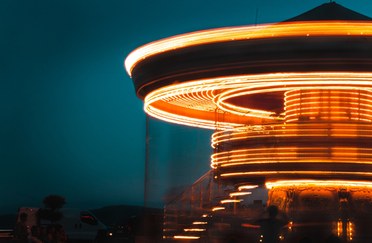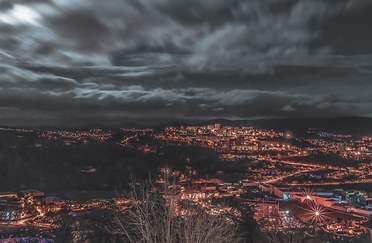Jazz musicians like to say the important thing isn’t the notes you play – it’s the ones you leave out. Same goes for lighting.
 | There are a huge range of outdoor lighting applications. Some are about safety, some are about orientation, some are about decoration. Many are all of the above. At the same time, we have to balance all this with conserving energy, not disturbing residents or wildlife, and minimising light pollution so we don’t contribute to sky glow. |
The key is to think carefully about what the light is actually trying to achieve. What’s the objective?
We’ve seen more and more outdoor lighting appear in recent years, and frankly, it’s not always welcome. Let’s face it, not every building facade needs to be lit at night. If you decide you’re going to light one, think about ways you can do it that minimise light pollution and energy use, and still create a striking effect. We talk about “floodlighting”, but actually, if you’re trying to accentuate architecture then a “flood” of light isn’t necessarily the answer. Think about what details you can accent and highlight, and where you can create contrast and depth.
Jazz musicians like to say the important thing isn’t the notes you play – it’s the ones you leave out. Same goes for lighting. But this doesn’t have to mean lighting is stripped down to be purely functional. For instance, one of the key purposes of outdoor lighting is safety. But in these cases, what you’re actually aiming for is often not just safety but a feeling of safety. Obviously people want to avoid being victims of crime or traffic accidents, but they also want to go about their lives without the fear of these things even entering their heads. That means creating spaces that people can see and navigate with clarity and confidence. |  |
Jazz musicians like to say the important thing isn’t the notes you play – it’s the ones you leave out. Same goes for lighting.
But this doesn’t have to mean lighting is stripped down to be purely functional. For instance, one of the key purposes of outdoor lighting is safety. But in these cases, what you’re actually aiming for is often not just safety but a feeling of safety. Obviously people want to avoid being victims of crime or traffic accidents, but they also want to go about their lives without the fear of these things even entering their heads. That means creating spaces that people can see and navigate with clarity and confidence.
There are lots of good reasons for installing outdoor lighting, but it should always be done with care, precision and restraint.
Photo credits:
D x L
Cathal Mac an Bheatha
